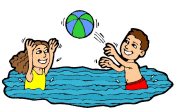 Even though the July 4th holiday has passed, there is still a lot of pool time left this summer. Parents and families are urged to review and practice proper water safety steps to assure a safe and fun experience, because you can never know which one might save a child’s life—until it does.
Even though the July 4th holiday has passed, there is still a lot of pool time left this summer. Parents and families are urged to review and practice proper water safety steps to assure a safe and fun experience, because you can never know which one might save a child’s life—until it does.
The Consumer Product Safety Commission (CPSC) reports that nearly 400 children under the age of five drown in a pool or spa each year. Children between the ages of 1 and 3 and African-American children between the ages of 5 and 19 are most likely to drown, according to the Centers for Disease Control and Prevention.
Pool Safely is a national public education effort to reduce child drownings, near-drownings and entrapments in swimming pools and spas. CPSC reminds all families to take the following steps to ensure that their time at the pool is safe for everyone:
CPSC’s Top Tips to Stay Safe Around the Pool or Spa This Summer
- Never leave a child unattended in or near a pool or spa. Designate a Water Watcher to supervise children around pools and spas. This person should not be reading, texting, using a smart phone, having an intense conversation or be otherwise distracted. Adults can take turns being the designated Water Watcher.
- The Centers for Disease Control and Prevention recommends “in touch” supervision, meaning the Water Watcher is close enough to touch that young child in an instant.
- Teach children basic water safety tips.
- If a child is missing, look for him or her in the pool or spa first.
- Keep children away from pool drains, pipes and other openings to avoid entrapments.
- Ensure any pool and spa has drain covers that comply with federal standards.
- Learn how to swim and teach your child how to swim.
- Learn how to perform CPR on children and adults, and update those skills regularly.
- Pool fencing should meet standards for height and for non-climbable height. The fence should be a minimum of 4-feet and the design should not include foot support for at least 40 inches of vertical space. (the average 3 year old can climb a 4-foot chain link fence)
- Install and use a lockable safety cover on spas.
- Have lifesaving equipment such as life rings, floats or a reaching pole available and easily accessible.
- Drowning is silent. Kids don’t yell for help. They don’t make a big splash. They lose control and go down, and if no one sees them, they stay down. Don’t assume the lifeguard at a public pool is watching your child. Remember most hotel/motel pools don’t have lifeguards.
- In the event, a child slips and is under water long enough to have a change in alertness or need help with coughing or breathing, he or she may need medical evaluation and 12 to 24 hours of observation.







